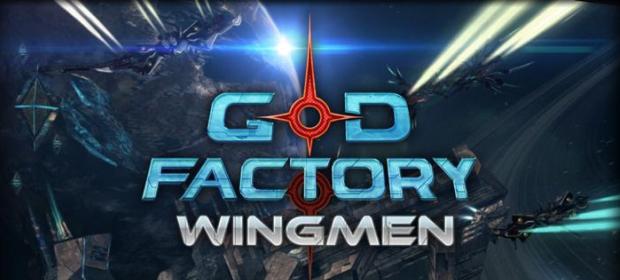If there’s one thing that’s categorically awful about GoD Factory: Wingmen, it’s the name. I mean, seriously, why so grandiose? GoD Factory: Wingmen is a surprisingly good four-versus-four space combat game, but that name does nothing to conjure up images of the nerve shredding hit and run space-chase gameplay that defines it, it just sounds confused. It’s a shame, too, as GoD Factory: Wingmen is pretty excellent.
The multiplayer shooter sees two teams of players start at their huge carrier, and their task is to eliminate the enemy carrier drifting a reasonable distance away while the rival team attempts the same. Simple stuff.
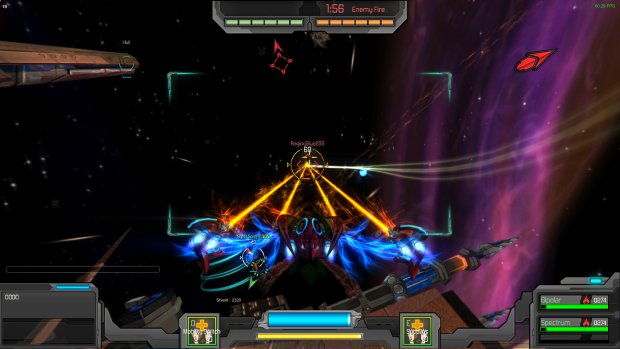
Except in execution it’s far from easy. For starters each player has two custom ships (chosen from four core archetypes) that they can customise as they rank up and buy new parts with the in-game currency. Parts include simple augmentations, such as travel speed, to more drastic alterations, such as different weapons. But in combat those ships are finite. Lose a vehicle during a game and you can’t use it again in that match, seeing it replaced with a far inferior drone. This is a simple design choice, but one that goes a long way to enhancing the cat and mouse gameplay vibes of GoD Factory: Wingmen.
Those gigantic cruisers that you’re attacking and defending aren’t simple health bars, they come with their own mechanical wrinkles that improve the game tenfold. These huge ships are made up of parts, as well as an overall hull. Shooting anywhere damages the hull, and destroying the hull wins the game, but destroying the ship’s various elements cripples your opponent’s abilities.
Destroy the radar and their sensor range is diminished. Break the repair module and ships will take longer to fix themselves when returned to the docking bay. Flying inside the ship you’ll find the shield generator, and destroying that will improve your overall damage to that ship, although that’s a hard task in itself and is best attempted through an organised strike with allies.
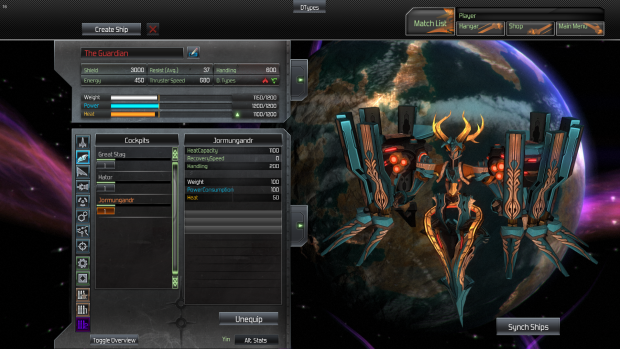
Cat and mouse, that’s the sort of relationship that defines GoD Factory: Wingmen. One minute you’re a mouse, avoiding enemy eyes and chipping away at their ship, scurrying at the first sign of enemy aggression. The next you’re the cat, prowling your territory for tasty morsels to pounce upon. This works because of the nature of GoD Factory: Wingmen’s ships.
Because your ship is lost on death, you want to survive. Ergo, coming under fire is a terrifying thing. Fortunately, flying in GoD: Wingmen is thrilling, and supports keyboard and mouse, controller or joystick, so you’ll find a comfortable set up. Speeding up and slowing down is easy, with a face melting boost available for limited periods when you need to dash, while the space bar lets you pull off 180 degree turns, shunt your ship backwards and forwards, and even pull off 90 degree turns for precision chasing/escaping.
Switch to first person, and the flying feels superb. Winding around a meteor to avoid enemy fire, or dashing out a tiny vent in pursuit of an offensive opponent is a thrill made all the better for the tight, responsive flight controls.
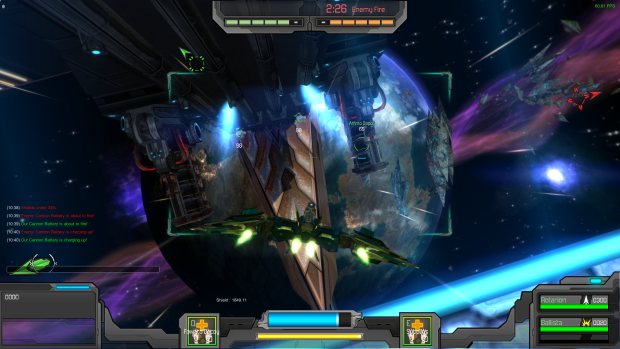
Where GoD Factory: Wingmen falls down, then, is not in its gameplay. I could happily sit and fly around, engaging in pursuits, escapes and bombing runs all afternoon. So it’s a shame that, as of writing this review, the community is a little tiny. It can sometimes take ten to fifteen minutes to wait for a room to fill up, if it even fills up at all, and that’s a huge shame given the quality of the title.
You can introduce Bots to the mix if you really want, but it’s not the same. Bot flight patterns pale against the unpredictable nature of human opposition, and you can’t organise co-ordinated attacks and pincers with AI as well as you can humans.
Perhaps it’s a perceived lack of variety. For its wealth of ships GoD Factory: Wingmen only offers one map. Considering it’s space combat, not a lot would change from simply adding different debris placement, but there’s no denying that looking at the same landscape can get tiring by the virtue of simply being the only environment to play in.
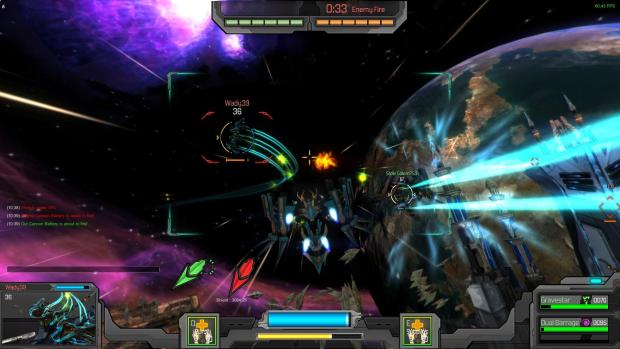
It’s a shame because these two negative points would be fixed with more people and a little more development time. But without new people, would making more levels be worth it? I’d like to think so. GoD Factory: Wingmen is a superb multiplayer game, with design working at so many cerebral levels that it deserves more praise and attention than it has found. As such, these negatives shouldn’t be viewed as standing criticisms, but rather as things that can easily be fixed should the game find the audience it deserves.
GoD Factory: Wingmen may win the award for worst named game of 2014 thus far, but this naming blunder masks one of the smartest multiplayer team games of recent years. Layers of thoughtful design are married to tight, responsive, spontaneous space flight controls to make a four-versus-four online space shooter that’s both thrilling and satisfying in equal measure.

VERY GOOD. An 8/10 is only awarded to a game we consider truly worthy of your hard-earned cash. This game is only held back by a smattering of minor or middling issues and comes highly recommended.
Review code provided by publisher.


